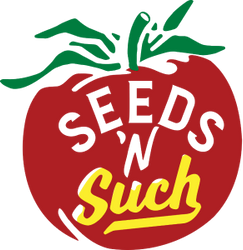
Why You Should Grow Edible Flowers
“Growing edible flowers adds a vibrant new dimension to your garden and mealtimes. The variety of beautiful colours, textures and flavours, served with home-grown fruits and vegetables brings the whole garden to your plate,” says English no-dig gardening expert Stephanie Hafferty in the most recent edition of British-based Permaculture Magazine.
“Edible flowers have been grown worldwide for centuries, for ceremonial, nutritional and medicinal uses. Edible flowers make the most of your growing area, creating a sustainable garden rich in biodiversity: a flower garden you can eat!” says Hafferty in her article entitled, ‘Edible Flowers and Why You Should Grow Them.’ “This is particularly useful if you are growing in smaller spaces—such as allotments, urban gardens, balconies, rooftops, windowsills—where it is advantageous for every plant to have multiple uses. A good solution for those with smaller (or no) gardens, these versatile plants can be grown in pots, as ground cover, climbing up trellis or poles to make the most of vertical space, indoors on windowsills.”
Hafferty continues, “Beneficial for wildlife, attracting bees and other pollinators, many also offer natural pest control—marigolds to repel black fly for example—or attracting predators, such as ladybird larvae or hoverflies. Others are helpful companion plants—grow basil and lemon gem marigolds with tomatoes. I love to grow edible flowers because they delight all of the senses: the rich variety of colours, beauty, fragrance, as well as the culinary adventure of flavours. They are food for the body and soul.”
Hafferty says that another benefit of growing your own edible flowers is that you know exactly what the plant identity is and you can be confident that it has been grown without chemicals. She encourages gardeners to check and make certain the varieties they are growing are edible, as some cultivars of certain edibles cannot be eaten. She stresses that we be careful to accurately identify edible flowering plants already established in our gardens and especially those we forage from the wild, as some poisonous plants resemble edible ones. She adds that some edible flowers can be eaten whole, like violas, but others only allow the petals to be eaten, and you should be certain of any restrictions before picking.
“Some edible flowers are grown specifically for their blooms,” notes Hafferty, “others are picked from established perennials (daylilies, roses, angelica), while flowering herbs are more often grown for their leaves (basil, chives, rosemary). You can even make use of the flowers of vegetables (peas, broadbeans, courgettes) and of ‘bolting’ vegetables such as brassicas. Forage for edible wildflowers (honeysuckle, elderflower, wild violet, dandelion) in many rural and urban locations, remembering to wash these especially well before using (Try to avoid picking too close to heavy traffic).”
Hafferty says, “The potential health benefits of edible flowers have been recognised in many cultures globally for centuries. They make you feel good just looking at them: the colours are uplifting, there is a sheer pleasure from enjoying eating the beautiful colours and shapes. Many are rich in valuable vitamins and minerals and can be a source of phytochemicals and antioxidants. Often herb flowers have the same properties as the leaves, usually tasting quite similar too.”
The expert British gardener concludes, The many potential culinary uses of edible flowers include decorating food—fresh or crystallised with sugar—teas, tinctures, syrups, pickles, wines and other alcoholic drinks, jams and jellies, vinegars, stuffed and deep fried, and flavoured sugar. Many edible flowers in the permaculture garden have other uses too: to make herbal remedies, salves, beauty potions, ecological remedies for garden pests, in potpourri and natural dyes.”
